Chinese space program
[13] On January 30, 1970, China successfully tested the newly developed two-stage Dongfeng-4 (DF-4) missile, which demonstrated critical technologies like rocket staging, engine in-flight ignition, attitude control.[citation needed] As part of the Third Front effort to relocate critical defense infrastructure to the relatively remote interior (away from the Soviet border), it was decided to construct a new space center in the mountainous region of Xichang in the Sichuan province, code-named Base 27.[citation needed] After Mao died on September 9, 1976, his rival, Deng Xiaoping, denounced during the Cultural Revolution as reactionary and therefore forced to retire from all his offices, slowly re-emerged as China's new leader in 1978.Although the cryogenic engine plan was much more challenging than the other one, it was eventually chosen by Chief Designer Ren Xinmin (任新民), who had foreseen the great potential of its use for the Chinese space program in the coming future.[citation needed] On April 7, 1990, a Long March 3 rocket successfully launched AsiaSat 1 into target geosynchronous transfer orbit with high precision, fulfilling the contract.In 1998, the administrative branch of China Aerospace Corporation was split and then merged into the newly founded Commission for Science, Technology and Industry for National Defense while retaining the title of CNSA.In 1998, the United States accused Hughes and Loral of exporting technologies that inadvertently helped China's ballistic missile program while resolving issues that caused the Long March rocket launch failures.After orbiting the Earth for 14 rounds, the spacecraft initiated the return procedure as planned and landed safely in Inner Mongolia at 03:41 on November 21, marking the full success of China's first Shenzhou test flight.[citation needed] Since the beginning of 21st century, China has been experiencing rapid economic growth, which led to higher investment into space programs and multiple major achievements in the following decades.[51] The complete success of Shenzhou 5 mission was widely celebrated in China and received worldwide endorsements from different people and parties, including UN Secretary General Kofi Annan.In 2005, two Chinese astronauts, Fei Junlong (费俊龙) and Nie Haisheng (聂海胜), safely completed China's first "multi-person and multi-day" spaceflight mission aboard Shenzhou-6 (神舟六号) between October 12 and 17.Just like several other space programs of China, CLEP was divided into three phases, which were simplified as "Orbiting, Landing, Returning" (“绕、落、回”), all to be executed by robotic probes at the time of planning.Its purpose is to establish an all-day, all-weather coverage Earth observation system for satisfying the requirements of social development as part of the Chinese space infrastructures.[71] Deputy Chief Designer, Huang Weifen, stated that near the end of 2009, the China Manned Space Agency began to train astronauts on how to dock spacecraft.Two astronauts, Jing Haipeng and Chen Dong (陈冬) entered Tiangong 2 and were stationed for about 30 days, breaking China's record for the longest human spaceflight mission while carrying out different types of human-attended experiments.A day later, the Yutu rover (玉兔号月球车) was deployed to the lunar surface and started its survey, achieving the goal of "landing and roving" for the second phase of CLEP.[85] While China was making remarkable progress in all areas above, the Long March rockets, the absolute foundation of Chinese space program, were also experiencing a crucial revolution.Although this hypergolic propellant is simple, cheap and reliable, its disadvantages, including toxicity, environmental damages, and low specific impulse, hindered Chinese carrier rockets from being competitive against other space powers since the mid-1980s.[90] On June 25, 2016, the medium-lift Long March 7 (长征七号), which was equipped with six YF-100 engines, completed its maiden flight in full success, increasing the maximum LEO payload capacity by Chinese rockets to 13.5 tons.However, after a successful maiden flight in late 2016, the second launch of the Long March 5 on July 2, 2017 suffered a failure, which was considered as the biggest setback for Chinese space program in nearly two decades.Astronauts Zhai Zhigang, Wang Yaping and Ye Guangfu completed the first long-duration spaceflight mission of China that lasted for over 180 days before returning to Earth safely on April 16, 2022.The crew, including Chen Dong, Liu Yang and Cai Xuzhe, were expected to welcome the arrival of two space station modules during the six-month mission.[123] On July 24, the third Long March 5B rocket lifted off from Wenchang, carrying the 23.2 t Wentian laboratory module (问天实验舱), the largest and heaviest spacecraft ever built and launched by China, into orbit.[175]: 300 China is an attractive partner for space cooperation for other developing countries because it launches their satellites at a reduced cost and often provides financing in the form of policy loans.[177] The United States government has long been resistant to the use of PRC launch services by American industry due to concerns over alleged civilian technology transfer that could have dual-use military applications to countries such as North Korea, Iran or Syria.[180] The history of the U.S. exclusion policy can be traced back to the Cox Report's allegations that the technical information that American companies provided China for its commercial satellite ended up improving Chinese intercontinental ballistic missile technology.[citation needed] The short-lived second crewed program was based on the successful implementation of landing technology (third in the World after USSR and United States) by FSW satellites.The China Manned Space Agency (CMSA) of the Equipment Development Department of the Central Military Commission provides engineering and administrative support for the crewed Shenzhou missions.Ye Peijian, Commander in Chief of the Chang'e program and an academic at the Chinese Academy of Sciences, added that China has the "full capacity to accomplish Mars exploration by 2013.[218] Yang Liwei declared at the 16th Human in Space Symposium of International Academy of Astronautics (IAA) in Beijing, on May 22, 2007, that building a lunar base was a crucial step to realize a flight to Mars and farther planets.













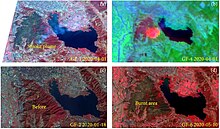
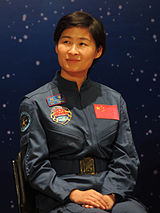



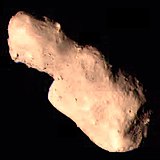


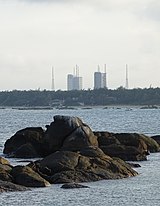

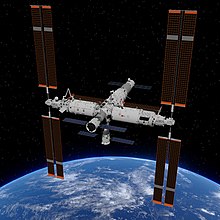




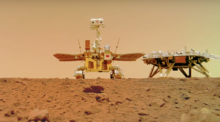



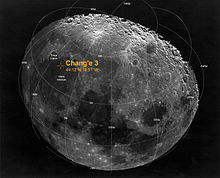

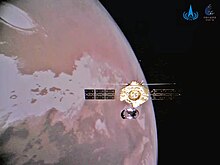

China National Space AdministrationPeople's Liberation Army Strategic Support ForceLong March 1Dong Fang Hong 1Long March 5BYutu lunar roverChang'e 4Zhurong roverShenzhou 14Tiangong Space StationspacewalkHistory of science and technology in ChinaList of discoveriesList of inventionsFour Great InventionsAgriculturesericultureAlchemyArchitectureclassic gardensbridgesAstronomyCalendarCartographyCeramicsCoinageMathematicsUnits of measurementTraditional medicineherbologyMetallurgyMilitaryPrintingSilk industryTransportnavigationNeolithic and early Bronze AgePeople's Republicouter spacePeople's Republic of Chinanewly alliedSoviet Unionballistic missilerocketSputnik 1Explorer 1Long March rocket familyJiuquanTaiyuanXichangWenchanglow Earth orbithuman spaceflightastronaut corpsChinese Deep Space NetworkChina Manned Space ProgramBeiDou Navigation Satellite SystemChinese Lunar Exploration ProgramGaofen ObservationPlanetary Exploration of ChinaChang'e-4Chang'e-5Chang’e-6Tianwen-1Qian XuesenCold WarR-2 missilesSino-Soviet splitInner MongoliaJiuquan Satellite Launch Center8th National Congress of the Chinese Communist PartyChinesesounding rocketsMao ZedongDongfeng-1Dongfeng-2Two Bombs, One Satellitecarrier rocketsDongfeng-4rocket stagingattitude controlNitric acidThird Frontwork unitsXichang Satellite Launch CenterTaiyuan Satellite Launch CenterDong Fang Hong IThe East Is Redcentrifugal forceShiJian-1magnetometercosmic-rayT-7A(S1)Base 603space raceZhou EnlaiCentral Military CommissionShuguang spacecraftintercontinental ballistic missileDongfeng-5medium-lift launch vehiclesFeng Bao 1Shanghai's 2nd Bureau of Mechanic-Electrical IndustryLong March 2China Academy of Launch Vehicle TechnologyFSW-0 No.1SichuanBase 27Base 25Deng XiaopingCultural RevolutionreactionaryYuanwangLong March 2Ccommunications satellitesDong Fang Hong 2Sun Jiadonggeostationary orbitLong March 3geosynchronous transfer orbitliquid hydrogenliquid oxygenRen Xinminelliptic orbitapoapsisSpace Shuttle

